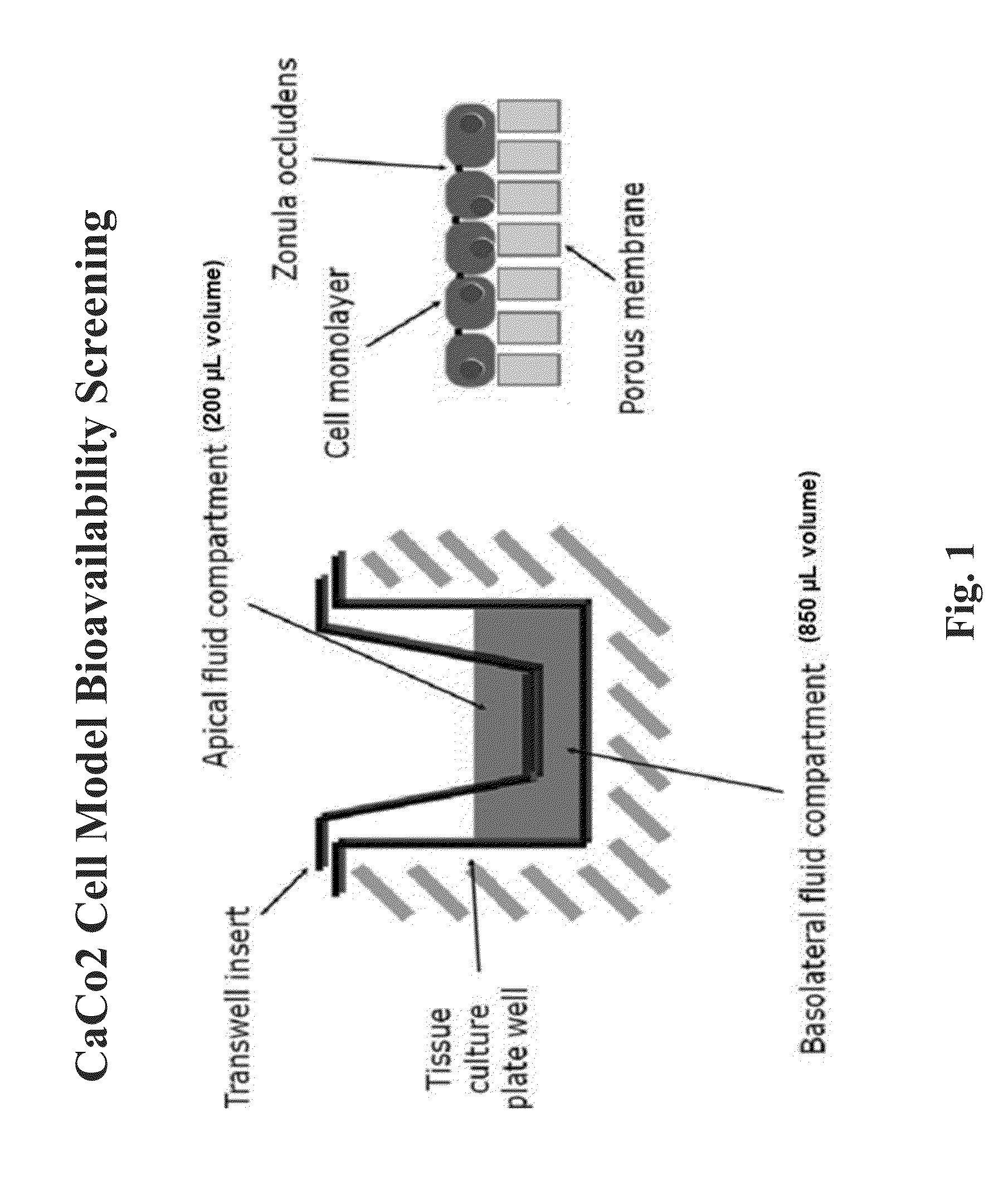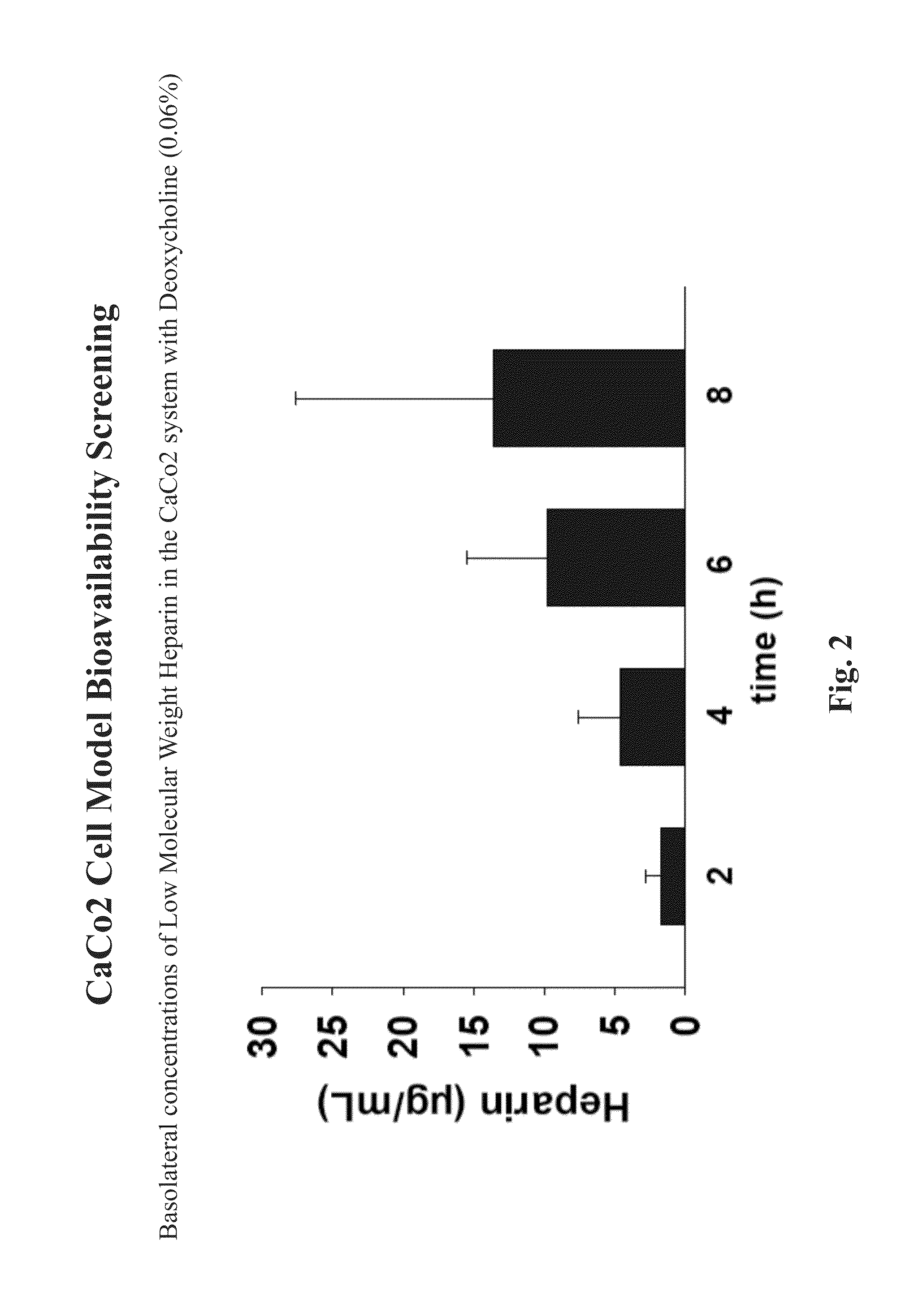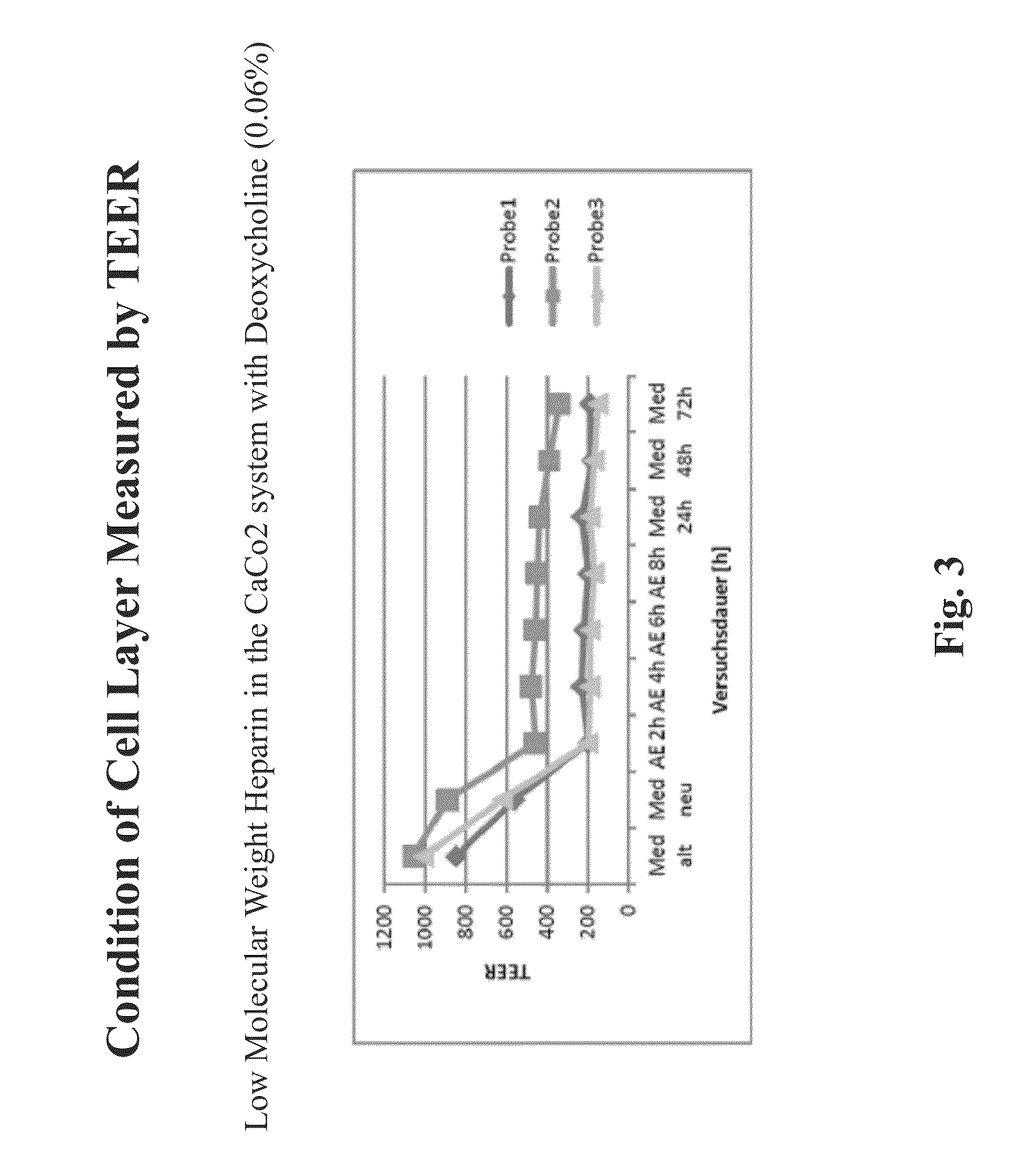Resorption enhancers as additives to improve the oral formulation of low molecular weight heparins
a technology of heparin and enhancer, which is applied in the direction of drug compositions, peptide/protein ingredients, extracellular fluid disorder, etc., can solve the problems of deep vein thrombosis and pulmonary embolism, and achieve the effect of enhancing the gastrointestinal epithelial barrier permeation
- Summary
- Abstract
- Description
- Claims
- Application Information
AI Technical Summary
Benefits of technology
Problems solved by technology
Method used
Image
Examples
example 1
[0130]An example of the resorption studies described herein is illustrated in Tables 1-3 which summarize the apical and basolateral concentrations of low molecular weight heparin in combination with the gastrointestinal epithelial barrier permeation enhancer, deoxycholine (0.06%) in the Caco-2 cell model. Table 1 illustrates two trials that include starting apical concentrations of the low molecular weight heparin in combination with deoxycholine is about 970 μg / mL (Trial 1) and 1210 μg / mL (Trial 2), respectively. After 8 hours, the apical concentration of the low molecular weight heparin is reduced by about 25% to an average of about 733 μg / mL (Trial 1) and 900 μg / mL (Trial 2).
TABLE 1SampleStart (mg / mL)8 hours (mg / mL)Trial 1 - LMWH and Deoxycholine 0.06%LMWH - Set A970740LMWH - Set B770LMWH - Set C690Trial 2 - LMWH and Deoxycholine 0.06%LMWH - Set A1210880LMWH - Set B970LMWH - Set C850
[0131]Table 2 illustrates the basolateral concentrations of low molecular weight heparin in combin...
example 2
[0133]Another example of the resorption studies described herein is illustrated in Tables 4-6 which summarize the apical and basolateral concentrations of low molecular weight heparin in combination with the gastrointestinal epithelial barrier permeation enhancer, deoxycholine (0.08%) in the Caco-2 cell model. Table 4 illustrates two trials that include starting apical concentrations of the low molecular weight heparin in combination with deoxycholine is about 930 μg / mL (Trial 1) and 1360 μg / mL (Trial 2), respectively. After 8 hours, the apical concentration of the low molecular weight heparin is reduced by about 45% to an average of about 560 μg / mL (Trial 1) and 683 μg / mL (Trial 2).
TABLE 4SampleStart (mg / mL)8 hours (mg / mL)Trial 1 - LMWH and Deoxycholine 0.08%LMWH - Set A930610LMWH - Set B520LMWH - Set C550Trial 2 - LMWH and Deoxycholine 0.06%LMWH - Set A1360630LMWH - Set B710LMWH - Set C710
[0134]Table 5 illustrates the basolateral concentrations of low molecular weight heparin in c...
example 3
[0136]Another example of the resorption studies described herein is illustrated in Tables 7-9 which summarize the apical and basolateral concentrations of low molecular weight heparin in combination with the gastrointestinal epithelial barrier permeation enhancer, chitosan (3% w / v) in the Caco-2 cell model. Table 7 illustrates two trials that include starting apical concentrations of the low molecular weight heparin in combination with chitosan is about 910 μg / mL (Trial 1) and 1390 μg / mL (Trial 2), respectively. After 8 hours, the apical concentration of the low molecular weight heparin is reduced by about 35% to an average of about 663 μg / mL (Trial 1) and 886 μg / mL (Trial 2).
TABLE 7SampleStart (mg / mL)8 hours (mg / mL)Trial 1 - LMWH and Chitosan (3% w / v)LMWH - Set A910720LMWH - Set B600LMWH - Set C670Trial 2 - LMWH and Chitosan (3% w / v)LMWH - Set A1390860LMWH - Set B870LMWH - Set C930
[0137]Table 8 illustrates the basolateral concentrations of low molecular weight heparin in combinatio...
PUM
| Property | Measurement | Unit |
|---|---|---|
| molecular weight | aaaaa | aaaaa |
| molecular weight | aaaaa | aaaaa |
| molecular weight | aaaaa | aaaaa |
Abstract
Description
Claims
Application Information
 Login to View More
Login to View More - R&D
- Intellectual Property
- Life Sciences
- Materials
- Tech Scout
- Unparalleled Data Quality
- Higher Quality Content
- 60% Fewer Hallucinations
Browse by: Latest US Patents, China's latest patents, Technical Efficacy Thesaurus, Application Domain, Technology Topic, Popular Technical Reports.
© 2025 PatSnap. All rights reserved.Legal|Privacy policy|Modern Slavery Act Transparency Statement|Sitemap|About US| Contact US: help@patsnap.com



